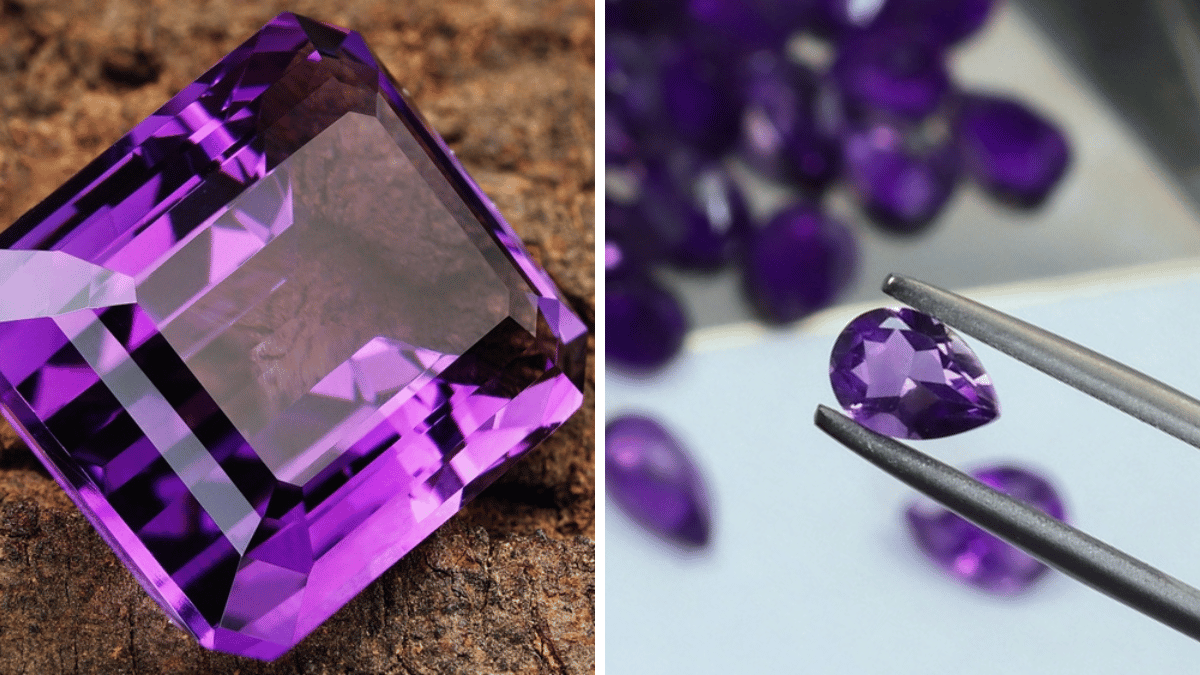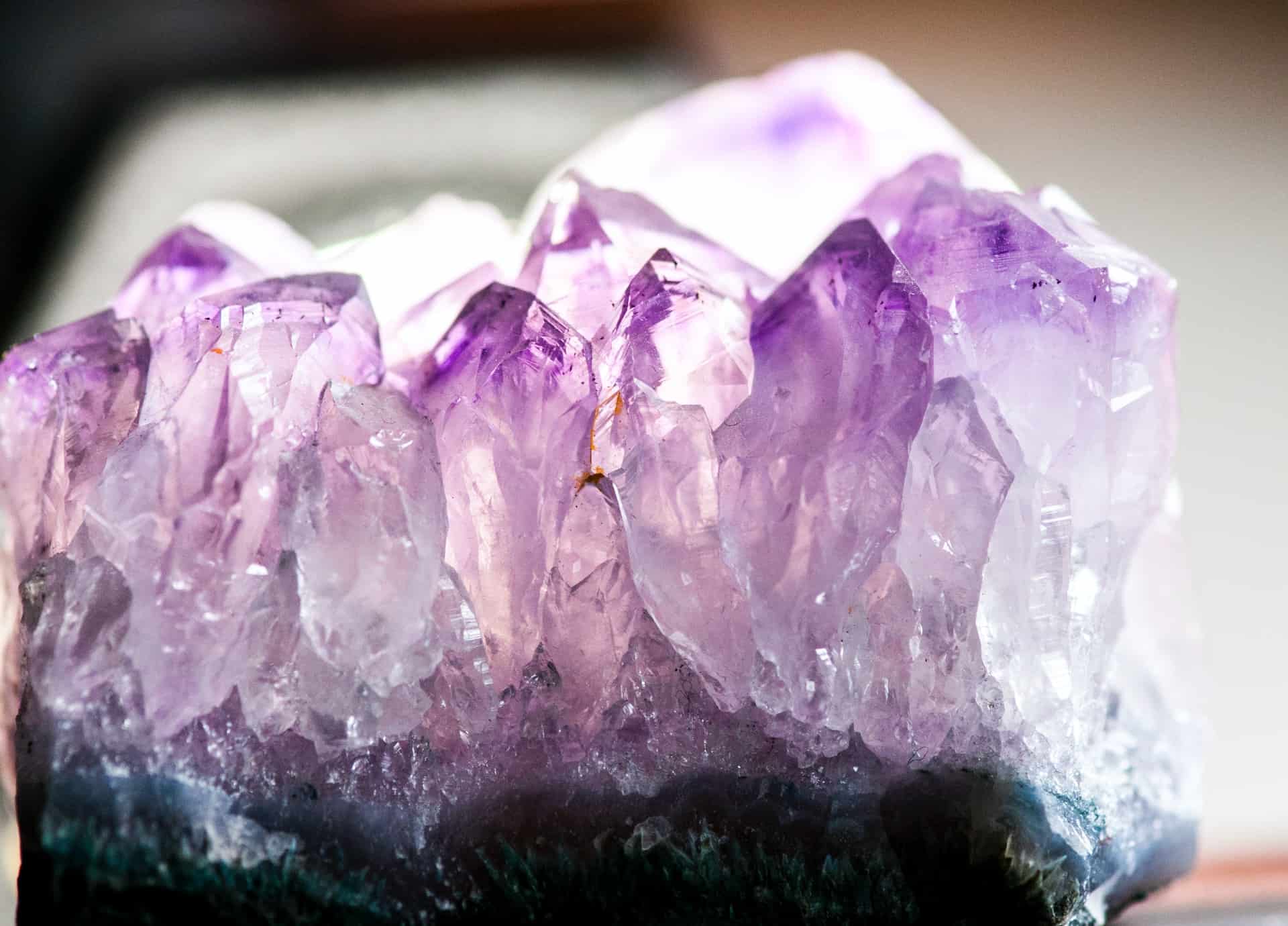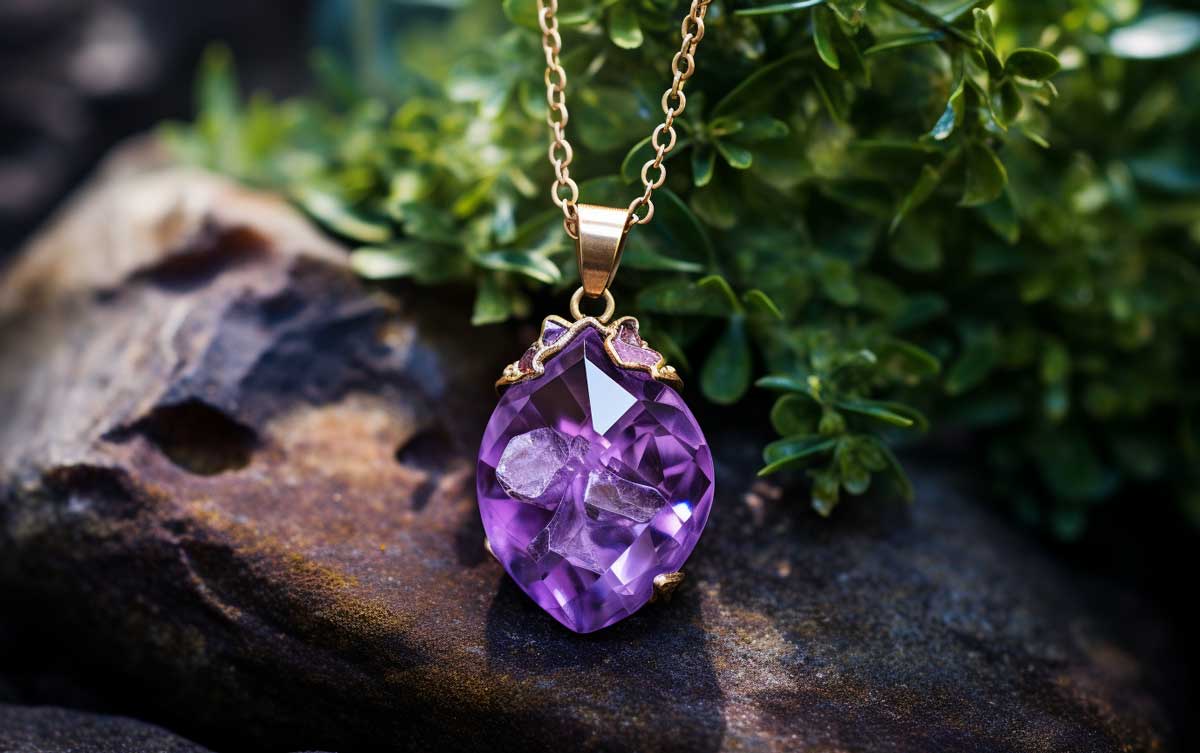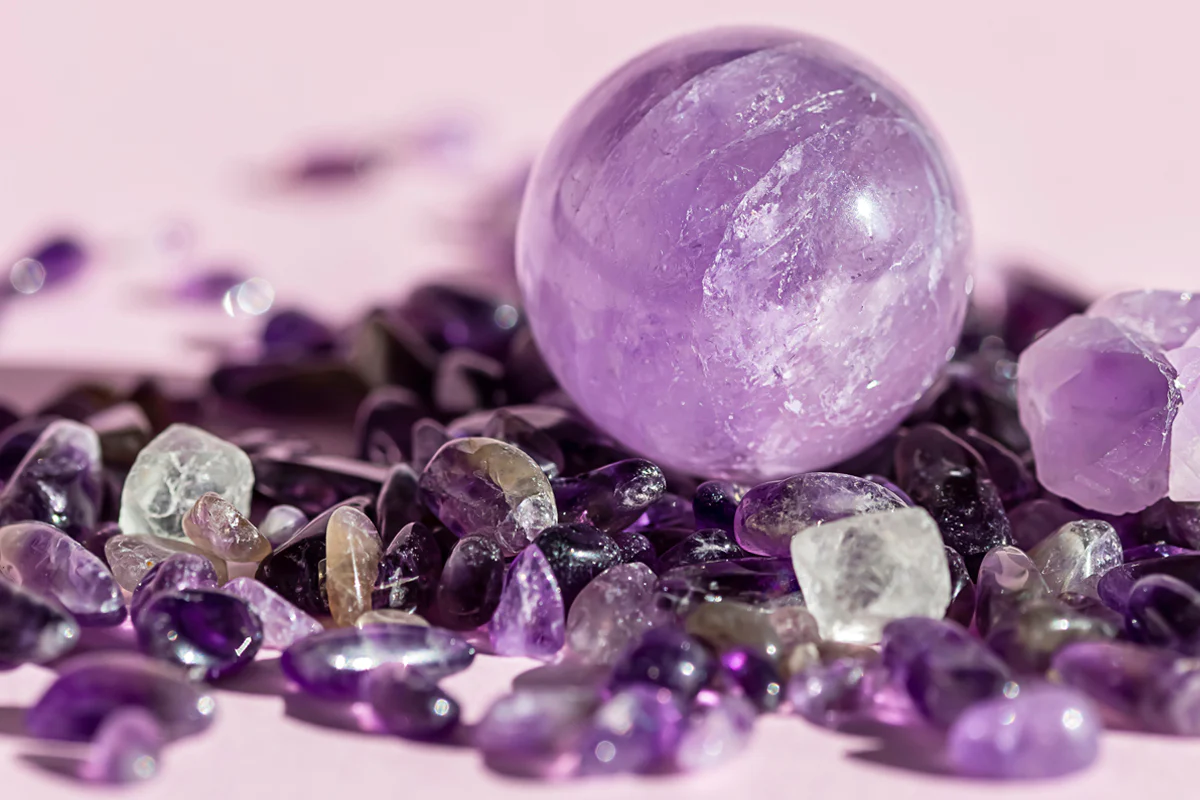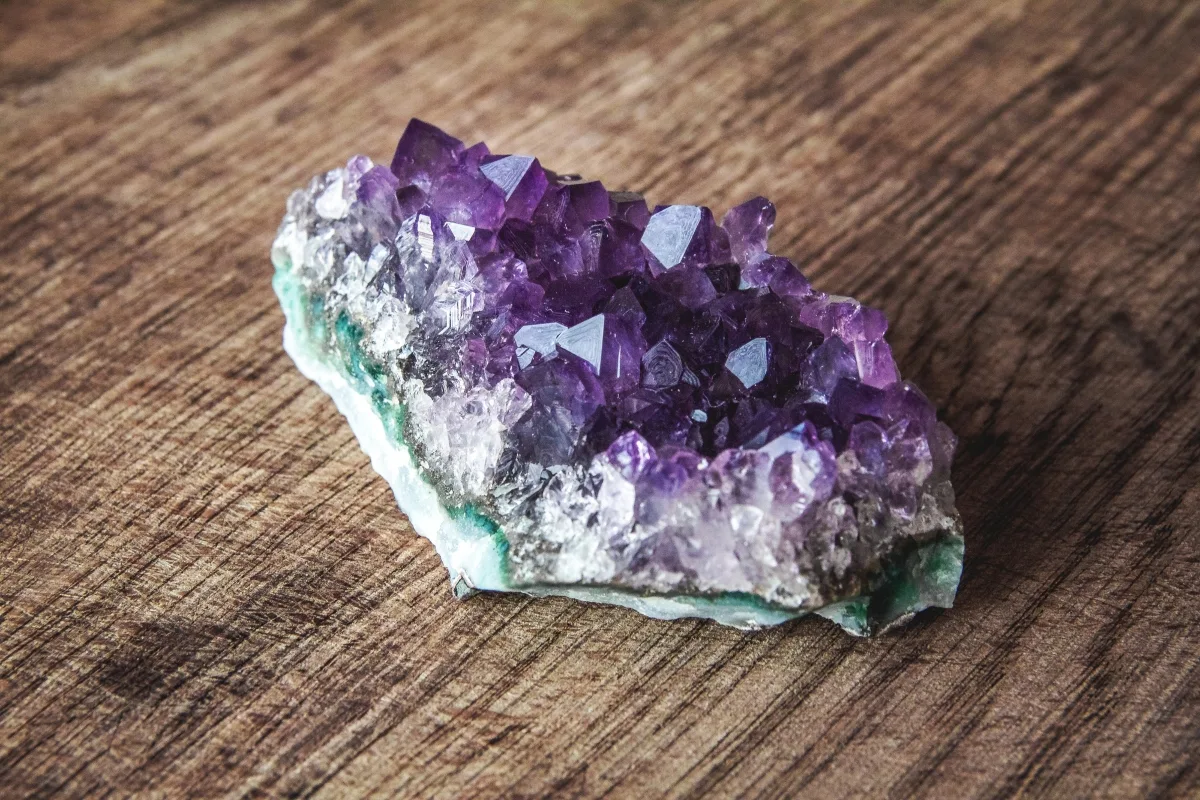
Amethyst stones, with their regal purple hue, possess an ethereal charm that captivates admirers worldwide. Discover how much worth 1 ct amethyst stone. Renowned for their stunning beauty and mystical allure, these gems have been cherished for centuries. Their color, ranging from delicate lilac to deep violet, evokes a sense of elegance and sophistication that makes them a coveted choice in the world of gemstones.
However, when considering the value of a 1 ct amethyst stone, it's important to note that several factors influence its worth. The quality of the stone, including factors like color intensity, clarity, and cut, significantly impacts its value. Additionally, the market demand and geographic origin play pivotal roles in determining the price of these exquisite gemstones.
The Basics Of Amethyst Valuation
Amethyst, the captivating purple quartz, can range in value from affordable to surprisingly expensive. Determining the worth of a 1ct amethyst involves a delicate dance between four key factors: color, clarity, cut, and carat weight. Let's explore how each shines in the valuation process:
1. Color
The undisputed king of amethyst value is color intensity and saturation. A deep, vibrant purple radiating towards red flashes is the holy grail, commanding the highest prices. Paler stones or those leaning towards blue shades are less valuable. Even within the desired range, nuances matter.
Subtle color zoning (variations within the stone) can affect price, and stones with a uniform, rich hue are prized. For your 1ct amethyst, aim for a deep, saturated purple with minimal zoning for maximum value.
2. Clarity
A clean stone, free from inclusions (internal flaws) and blemishes (surface flaws), is more valuable. Inclusions that are visible to the naked eye significantly decrease the worth.
However, minor inclusions, especially if hidden by the cut, may not have a drastic impact on a 1ct stone. Finding the balance between minimal visible flaws and maintaining the natural beauty of the gemstone is key.
3. Cut
The cut optimizes the brilliance and play of light within the amethyst. Cuts like brilliant or oval maximize fire and sparkle, increasing value. Conversely, poor cuts that result in a dull stone or one with light leakage detract from its worth. For your 1ct amethyst, a well-proportioned cut that showcases the color and maximizes brilliance is crucial.
4. Carat Weight
Larger amethysts are generally more valuable due to their rarity. However, for smaller stones like 1ct, this factor plays a less significant role. The focus shifts to maximizing the other three qualities as they have a more substantial impact on price within this range.
To accurately assess the worth of your 1ct amethyst, consider consulting a professional gemologist. They can provide a detailed evaluation based on all the factors mentioned above, giving you a clearer picture of your stone's true value.
Color And Clarity’s Impact On Value
When it comes to a 1ct amethyst, color and clarity reign supreme in determining its worth. These two factors intertwine in a complex dance, each influencing the other and ultimately shaping the stone's value. Let's delve deeper into their specific impact:
Color Impact On Value
The crown jewel of amethyst value, color intensity and saturation are the primary drivers of price. Imagine a spectrum:
- High-Value -Deep, rich purple with flashes of red, reminiscent of ripe plums or blackberry jam. This "Siberian" or "royal" purple is the most sought-after and commands the highest prices.
- Moderate Value -Medium-saturated purple with subtle hints of red or blue. This "commercial" grade is still desirable but less valuable than the deep shades.
- Low Value -Pale lavender or lilac hues with minimal saturation. These stones are less prized and have lower market value.
Clarity's Impact On Value
While a clean stone is always desirable, the impact of clarity on a 1ct amethyst is slightly nuanced:
- Eye-Clean -Stones free from inclusions visible to the naked eye are highly valuable. They sparkle brilliantly and showcase the true beauty of the color.
- Minor Inclusions -Small, feathery inclusions hidden within the stone or visible only under magnification have a minimal impact on value, especially if the color is exceptional.
- Visible Inclusions -Inclusions that are readily noticeable, affecting transparency or brilliance, significantly decrease the worth. Cracks, fractures, or large inclusions can render the stone commercially undesirable.
Example
- High-Value -A 1ct amethyst with a deep, rich purple color, eye-clean clarity, and a well-proportioned cut can fetch several hundred dollars, depending on origin and market trends.
- Moderate Value -A 1ct stone with a medium-saturated purple hue, minor hidden inclusions, and a good cut might be valued at around a hundred dollars.
- Low Value -A 1ct amethyst with a pale lavender color, visible inclusions that affect brilliance, and a poor cut might be worth less than fifty dollars.
The Role Of Cut In Amethyst Valuation
In the intricateworld of amethystvaluation, the cut plays a surprisingly pivotal role, especially for a 1ct stone. It's the sculptor, shaping the raw beauty of the gem into a dazzling masterpiece, or, if mishandled, a dull underperformer.
Cuts That Maximize Value
- Brilliant/Round -This classic cut, with its multiple facets, excels at dispersing light, creating a kaleidoscope of brilliance and fire. For a 1ct amethyst, a well-proportioned brilliant cut can dramatically enhance its sparkle and value.
- Oval -Similar to the brilliant, the oval cut captures light beautifully while offering a touch of elegance. It can also be a good choice for stones with slight color zoning, as the elongated shape can help camouflage variations.
- Cushion -Offering a softer, romantic feel, the cushion cut can highlight the richness of the amethyst's color while maintaining good brilliance. For a 1ct stone, a balanced cushion cut that doesn't sacrifice too much weight can be a valuable option.
Cuts That Can Diminish Value
- Shallow Cuts -Cuts that prioritize carat weight by sacrificing depth can result in a dull stone with poor light play. This is especially detrimental for amethysts, where color richness is key.
- Uneven Facets -Sloppy cuts with uneven facets can create light leakage and dead zones, significantly impacting the stone's sparkle and attractiveness.
- Fancy Cuts -While fancy cuts like hearts, stars, or carvings can be appealing, they often waste more rough material and might not be commercially as valuable as traditional cuts.
The Weighty Dilemma
Balancing cut quality with maintaining carat weight is a constant dilemma for gem cutters. Ideally, the cut maximizes brilliance and beauty while preserving as much material as possible. For a 1ct amethyst, the sweet spot lies in choosing a cut that showcases the color and sparkle without sacrificing too much weight. A skilled cutter can achieve this balance, ensuring the stone retains its value while captivating the eye.
The ideal cut for your 1ct amethyst depends on your priorities. Do you prioritize maximum brilliance and value, even if it means losing a bit of weight? Or are you seeking a unique, eye-catching piece, even if it comes at a slight cost to sparkle? Consulting a skilled gem cutter who understands your preferences and the specific characteristics of your stone is crucial for making the best decision.
Market Trends And Amethyst Prices
Understanding the current market trends for amethyst is crucial to gauge the potential value of your 1ct stone. Here's a dive into the fascinating world of purple allure:
Demand
- Rising -Fashion trends featuring vibrant gemstones and the increasing popularity of alternative wellness practices have boosted amethyst demand, particularly for high-quality stones.
- Millennial & Gen Z Influence -These generations' penchant for unique, ethically sourced gemstones creates a strong market for amethysts with interesting color variations and sustainable sourcing stories.
- Jewelry -Amethysts remain popular in fashion jewelry, with demand for affordable pieces driving the market for lower-grade stones. However, the demand for high-quality amethysts in fine jewelry pieces is also growing steadily.
Supply
- Stable -Amethyst deposits are found worldwide, including Brazil, Zambia, Uruguay, and Russia. While some mines have seen fluctuations, the overall supply of rough amethysts has remained relatively stable.
- Ethical Sourcing -Consumers are increasingly conscious of ethical practices in the gemstone industry. This can lead to higher demand for amethysts from responsible sources with transparent supply chains.
- Impact on Price -The stable supply balanced with rising demand creates a positive outlook for amethyst prices. High-quality 1ct stones with deep, saturated color and eye-clean clarity can see their value steadily rise. However, lower-grade stones might experience less significant price growth.
Emerging Trends
- Investment Potential -Gemstones, including amethysts, are increasingly viewed as alternative investment options. This could further propel demand and prices for high-quality stones.
- Metaverse and NFTs -The rise of the metaverse and non-fungible tokens (NFTs) opens up new avenues for amethyst utilization, potentially influencing future market dynamics.
Overall Impact On Your 1ct Amethyst
- High-quality stones -A 1ct amethyst with exceptional color, clarity, and cut can benefit from the rising demand and potentially see its value increase over time.
- Lower-grade stones -The price growth for these stones might be less pronounced but could still experience gradual appreciation due to the overall positive market outlook.
By navigating the evolving landscape of amethyst market trends, you can make informed decisions, appreciate the potential value of your 1ct gem, and watch it sparkle not just with beauty, but with market savvy.
Comparing Amethyst Prices With Other Gemstones
In the dazzling world of gemstones, amethyst shines not just with its captivating purple hue, but also with its surprisingly accessible price tag. Let's compare amethyst's value to other gems, revealing the charm of its affordability:
Diamonds
The undisputed kings of gemstone value, diamonds can cost ten to hundreds of times more than a comparable amethyst. Their rarity, hardness, and unparalleled brilliance contribute to their hefty price tag.
While amethysts might lack the same fire and hardness, they offer affordability and captivating color, making them a perfect alternative for those seeking a stunning gem without breaking the bank.
Rubies And Sapphires
These precious gems follow diamonds in terms of cost, often being several times more expensive than amethysts. Their intense color saturation and exceptional hardness make them highly prized. If you desire a vibrant red or blue gemstone, you can find stunning, budget-friendly amethysts with similar hues, albeit with slightly less intensity.
Emeralds
While still valuable, emeralds are typically less expensive than the "Big Three" gems. However, compared to amethysts, they can still cost two to five times more. Their delicate nature and susceptibility to inclusions contribute to their higher price point. Amethysts offer a more robust alternative with less risk of damage, making them a practical choice for everyday wear.
Citrine And Topaz
These yellow and orange gems share a similar price range to amethysts, sometimes even overlapping. However, their color palette is limited compared to the mesmerizing range of purple hues found in amethysts. Amethysts also tend to have a higher brilliance due to their refractive index, adding to their value proposition.
Why Amethyst Is More Affordable
- Abundance -Amethysts are relatively abundant compared to other gemstones, contributing to their lower price point.
- Hardness -While not as hard as diamonds and sapphires, amethysts are still durable enough for everyday wear, reducing the need for extra care and potentially influencing their cost.
- Versatility -Amethysts come in a stunning range of purple shades, from deep royal to delicate lavender, offering a wider choice for different budgets and preferences.
The choice between amethyst and other gemstones depends on your individual preferences and budget. But with its alluring hues, affordability, and surprising versatility, amethyst is a dazzling gem that's sure to add a touch of magic to any collection.
Where To Get Your Amethyst Appraised
Owning a captivating amethyst is a truly enchanting experience, but knowing its true worth adds another layer of wonder. Getting a professional appraisal is the key to unlocking this hidden value, but navigating the world of gemstone evaluations can be a bit daunting. Here's your guide to ensuring a reliable and accurate assessment for your precious purple gem:
Get Your Amethyst Appraised
- Gemological Institutes -Prestigious institutes like the Gemological Institute of America (GIA) offer comprehensive appraisal services conducted by certified gemologists. Their expertise and reputation come at a premium, but their reports are widely accepted and trusted in the industry.
- Independent Gem Labs -Accredited gem labs, often associated with jewelers or auction houses, provide reliable appraisals at potentially lower costs compared to institutes. Look for labs affiliated with recognized organizations like the American Gemological Society (AGS).
- Appraisers at Jewelry Stores -Many reputable jewelry stores have qualified gemologists on staff who can provide appraisals. While convenient, seeking a second opinion, as potential conflicts of interest might exist.
Choosing The Right Gemologist
- Certifications -Ensure the appraiser holds relevant certifications from recognized institutions like the GIA or AGS. These certifications signify extensive training and expertise in gemstone identification, grading, and valuation.
- Experience -Opt for an appraiser with experience in amethyst valuation. Understanding the nuances of color, clarity, and cut specific to this gemstone is crucial for an accurate assessment.
- Reputation -Research the appraiser's online presence and read reviews from previous clients. Positive feedback and industry recognition are good indicators of professionalism and trustworthiness.
The Importance Of Professional Appraisal
- Accurate Value -A professional appraisal provides a reliable estimate of your amethyst's market value, considering all relevant factors like weight, color, clarity, cut, and origin. This can be crucial for insurance purposes, estate planning, or potential sale.
- Peace of Mind -Knowing the true value of your amethyst assures you're not under-or over-insured, and it allows you to make informed decisions about its future.
- Detection of Treatments -Professional gemologists can identify any enhancements or treatments your amethyst might have undergone, affecting its value and potentially revealing undisclosed information.
By following these guidelines and choosing a certified and experienced gemologist, you can unlock the true value of your amethyst and embark on a journey of appreciating its hidden wonder, both financial and aesthetic. So, hold your precious purple gem close, and let a professional guide you towards understanding its full potential.
